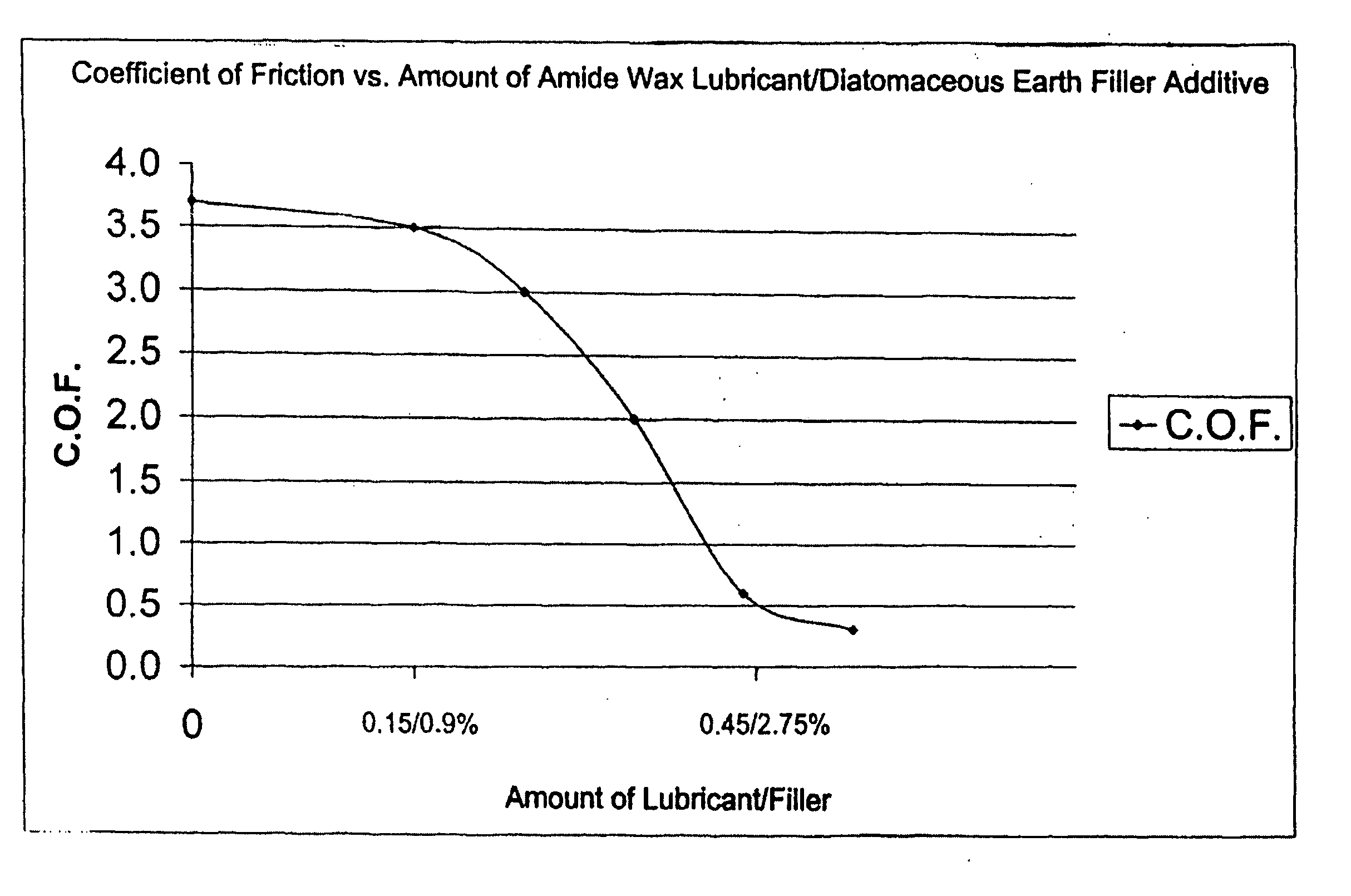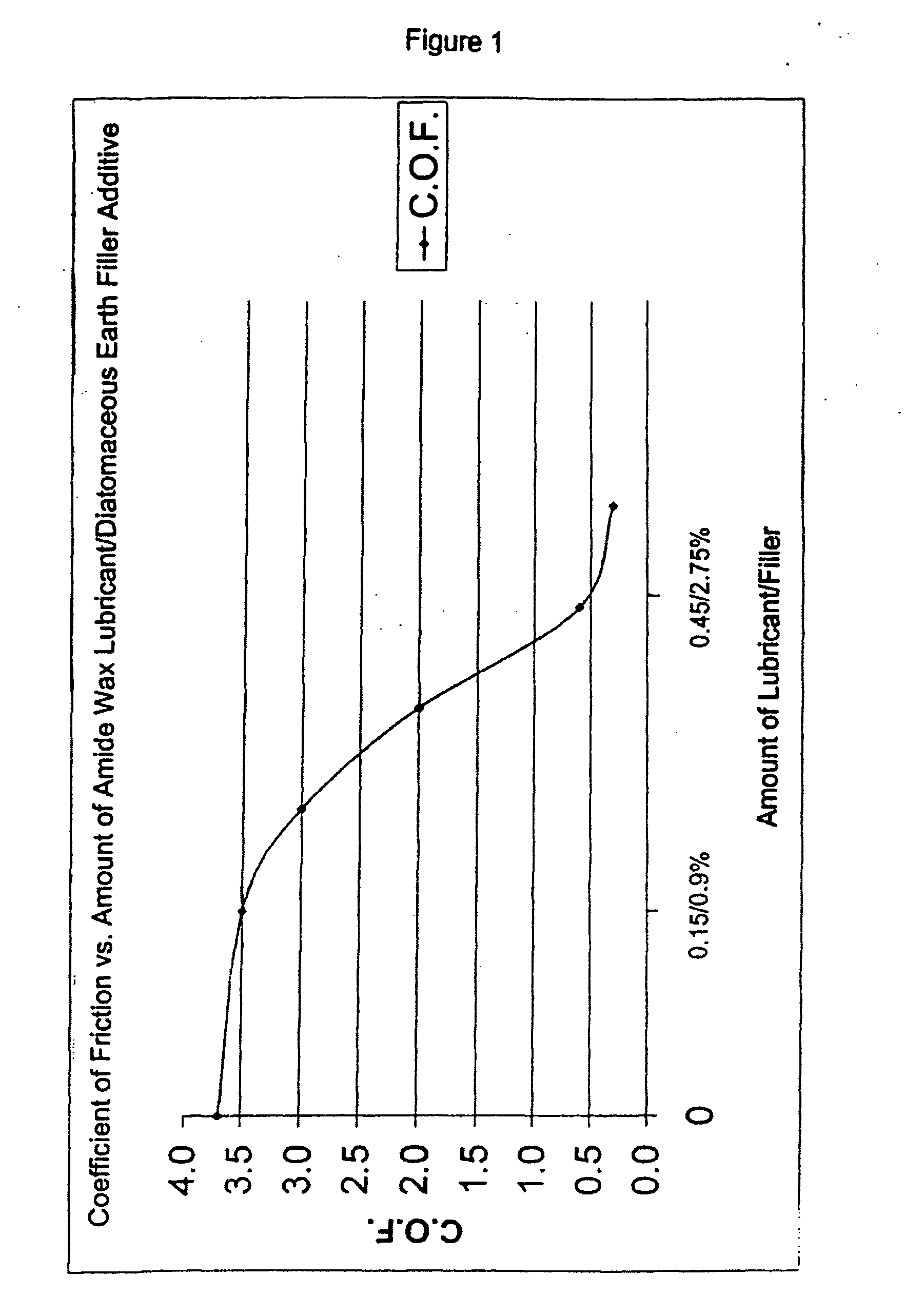Pipe liners and method of lining pipes
a pipe and pipe lining technology, applied in the direction of pipes/joints/fittings, ceramic shaping apparatus, manufacturing tools, etc., can solve the problems of tube to evert, all the aforesaid methods have certain drawbacks, and the installation of the system can be costly
- Summary
- Abstract
- Description
- Claims
- Application Information
AI Technical Summary
Benefits of technology
Problems solved by technology
Method used
Image
Examples
example 1
Modified Polymer
[0103] Various samples of Estane®, MC45DB1NAT021P, a thermoplastic polyurethane, was obtained from Noveon Europe B.V.B.A., Chausée de Wavre 1945, B-1160 Brussels, Belgium, wherein the thermoplastic polyurethane incorporated various levels of an amide wax lubricant additive, Glycolube VL, N—N′ ethylene bis stearamide (supplied by Lonza Group Ltd, Münchensteinerstrasse 38, Basel, Switzerland): 0.1%, 0.2%, 0.3%, 0.4%, 0.5% and 0.6% by weight with respect to the Estane®. Moreover, diatomaceous earth, Celite-Superfloss (supplied by Grupo Proquim, Centro Plaza Torre “B”, Piso 17 Av Francisco de Miranda Los Palos Grandes, Caracas 1060A—Venezuela) was dispersed in each sample as a filler / supporting additive: 0.5%, 1.0%, 1.5%, 2.0%, 2.5%, 3.0%, 3.5%, 4.0% by weight with respect to the Estane®. A further sample simply comprised Estane® MC45BD1NAT021P, i.e. with no Glycolube VL lubricant and no Celite-Superfloss filler additive.
[0104] The additives and filler / supporting addit...
example 2
Laboratory Coating and COF Measurement Set-Up
[0107] Two high gloss rollers of a ZKM600 laboratory melt coater [supplied by Kleinewefers Kunststoff Anlagen GmbH, Neuer Weg 24, D-47803 Krefeld, Germany] were heated to 170° C. and 180° C. for the back and front rollers, respectively. The coating speed was adjusted to 5 m / min.
[0108] A sample of 500 g of Estane® MC45DB1NAT021P was dried for 1 hour @ 110° C. in a tray. After cooling down to room temperature the thermoplastic polyurethane (TPU) was spread evenly between the two running rollers of the ZKM600 melt coater. The back roller ran at 4 m / min, the front roller at 5 m / min [friction ratio 20%].
[0109] The 500 g pre-dried Estane® MC45DB1NAT021P was left for at least 5 min to melt between the running ZKM600 rollers at a gap width less than 500 μm and more than 200 μm.
[0110] The roller speed and temperature differentials facilitated that a film of molten Estane® MC45DB1NAT021P formed on the front roller. During melting of the TPU the...
PUM
| Property | Measurement | Unit |
|---|---|---|
| Fraction | aaaaa | aaaaa |
| Fraction | aaaaa | aaaaa |
| Percent by mass | aaaaa | aaaaa |
Abstract
Description
Claims
Application Information
 Login to View More
Login to View More - R&D
- Intellectual Property
- Life Sciences
- Materials
- Tech Scout
- Unparalleled Data Quality
- Higher Quality Content
- 60% Fewer Hallucinations
Browse by: Latest US Patents, China's latest patents, Technical Efficacy Thesaurus, Application Domain, Technology Topic, Popular Technical Reports.
© 2025 PatSnap. All rights reserved.Legal|Privacy policy|Modern Slavery Act Transparency Statement|Sitemap|About US| Contact US: help@patsnap.com


